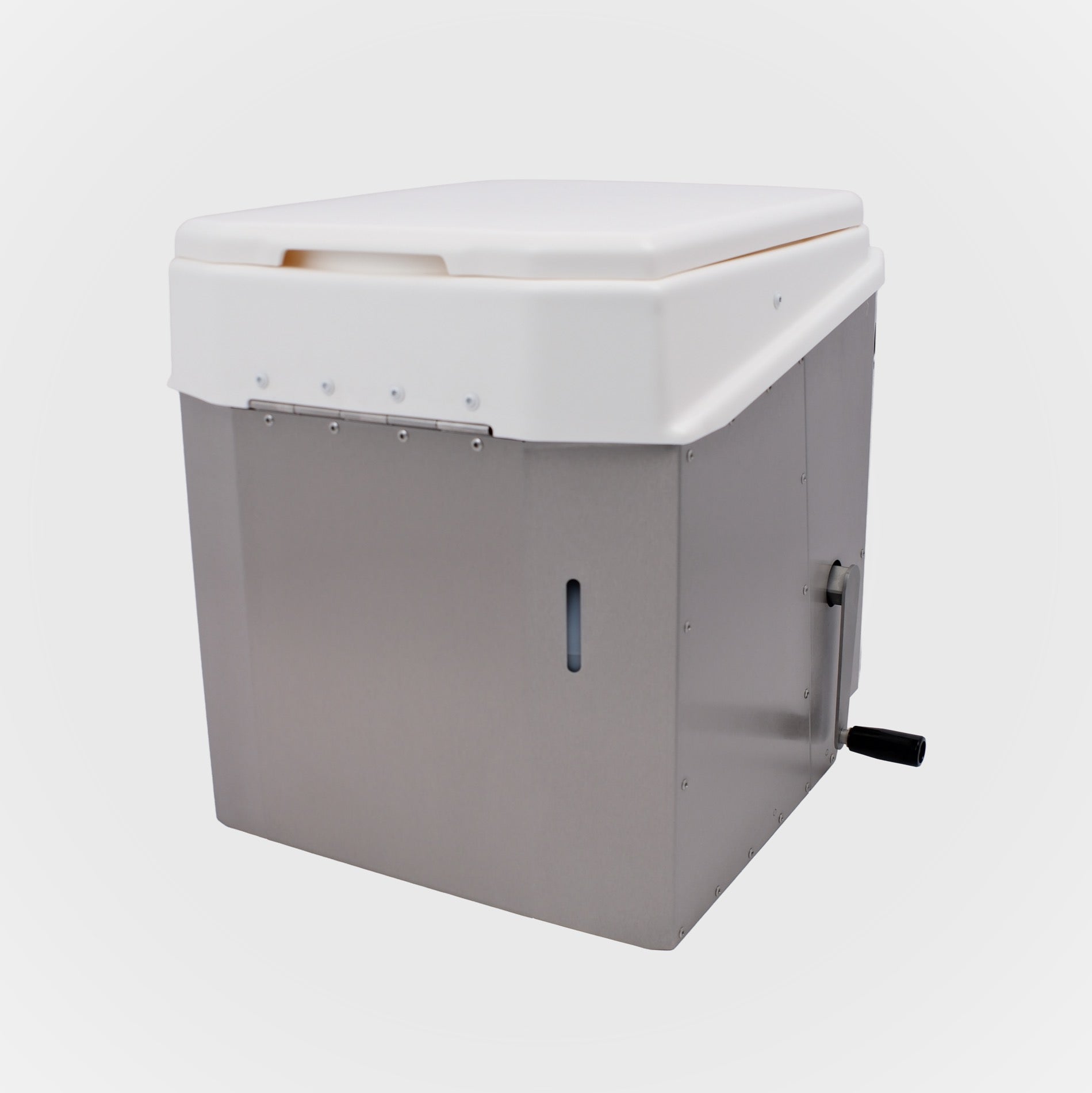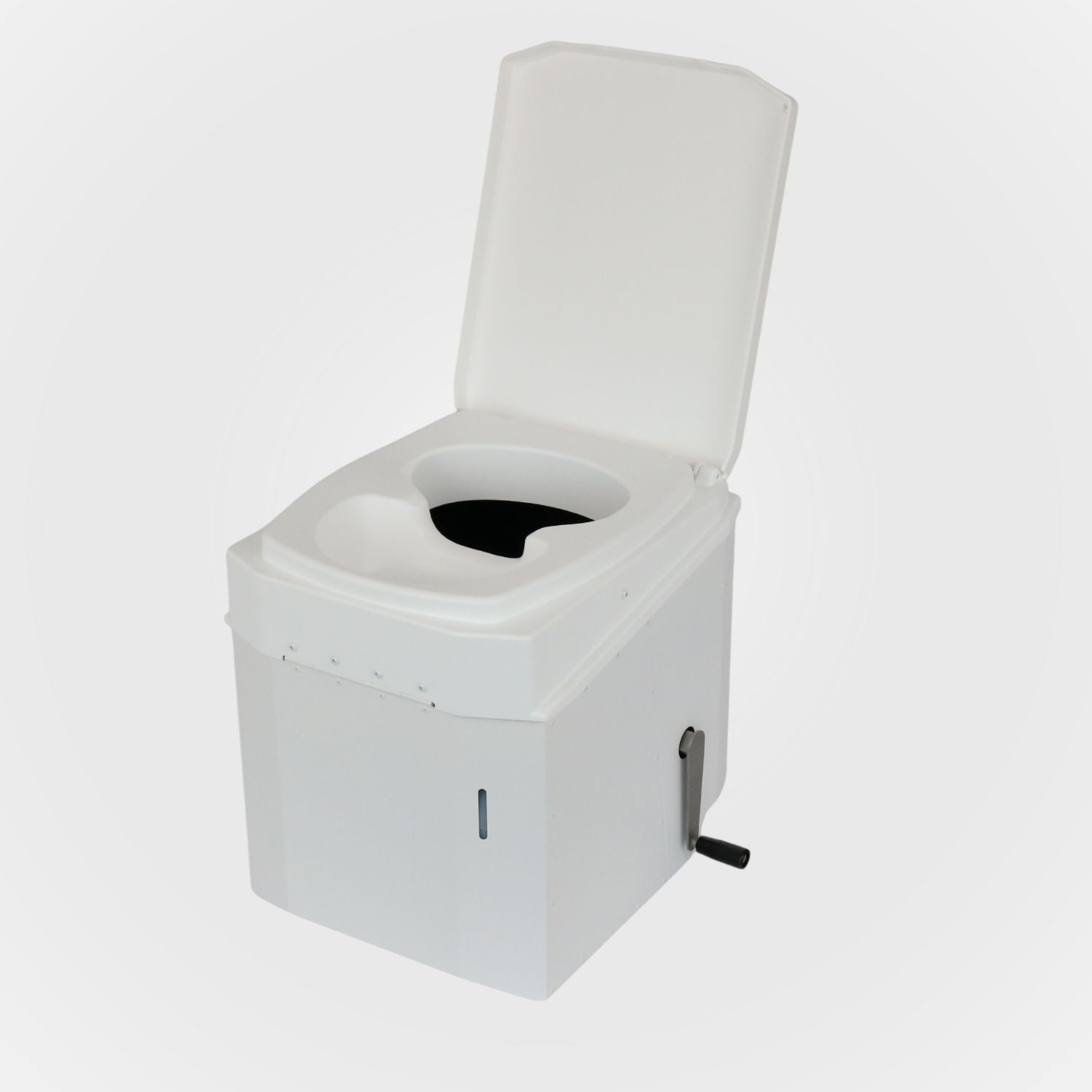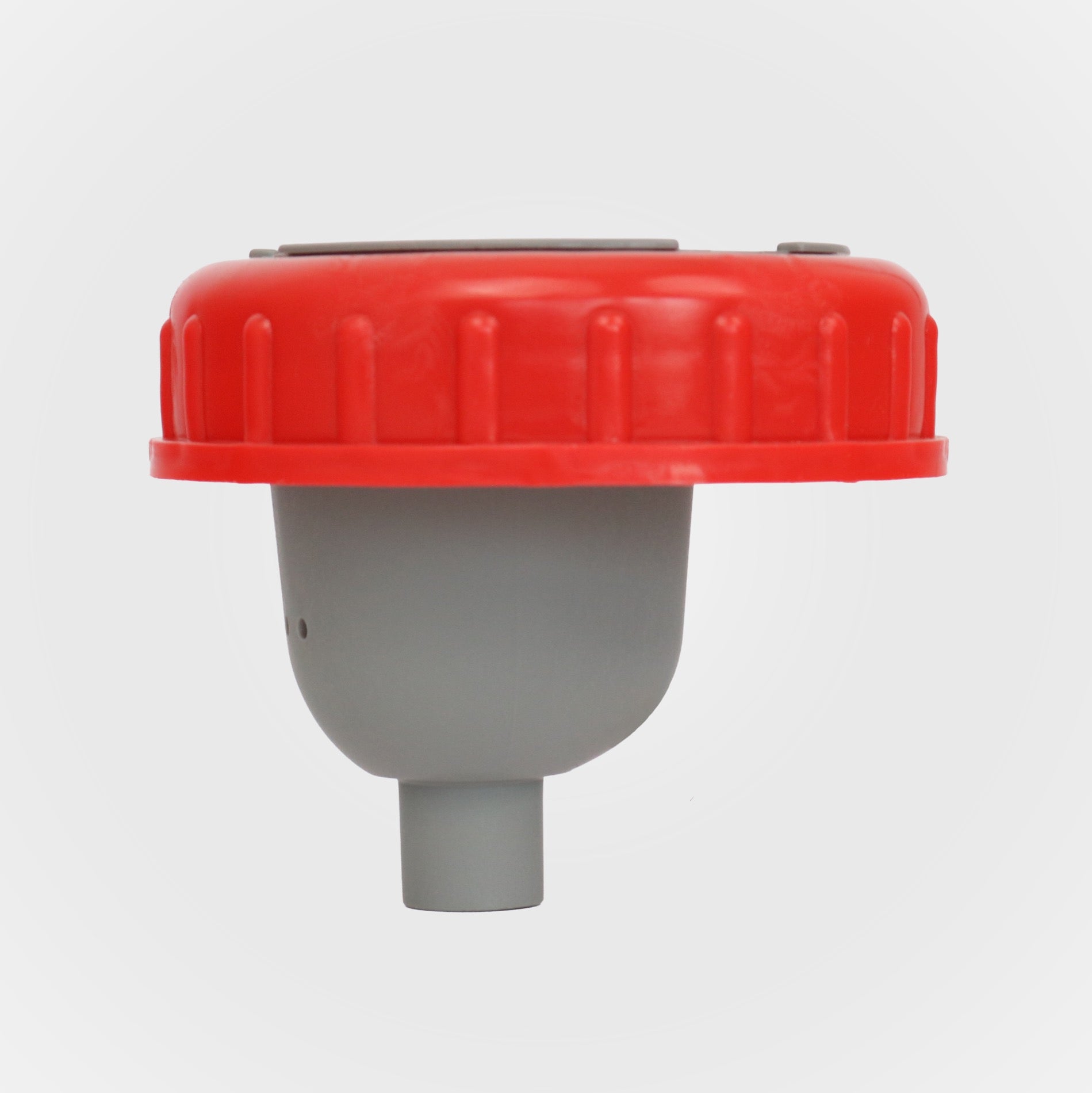In firefighting operations, speed and readiness are paramount. When things get so hectic that even a quick trip to the toilet is essential, the right sanitary facilities on site are crucial. The solution: a mobile composting toilet for firefighting operations.
Compostable toilets are quick and convenient to use, hygienic, and environmentally friendly. This makes them perfect for supporting emergency services when no sanitary facilities are available on site – whether in disaster relief, major incidents, or extended deployments in remote areas.
Compostable toilet units – hygiene and comfort directly on site
Many fire department operations lack functioning sanitary infrastructure. There are often no toilets on site, which significantly complicates hygiene for the emergency personnel.
Experience from everyday deployments shows that conventional portable toilets, especially chemical toilets, are often impractical. Chemical toilets require chemicals, cause odors, and are complicated to use and dispose of.
In emergency situations, a quick, uncomplicated and hygienic toilet break is important so that firefighters can always remain ready for action.
Requirements for composting toilets for the fire brigade
A composting toilet for firefighting operations must be robust and of high quality. With a toilet seat and housing made of durable plastic such as ABS or polypropylene, the toilet functions reliably and flawlessly even under harsh operating conditions.
The fact that composting toilets don't use water or chemicals makes them even easier to use and is also environmentally friendly. And since firefighters often need to act quickly, rapid setup and ease of use are particularly important for composting toilets.
Another essential requirement is minimal odor. The separation system of a dry toilet keeps urine and feces separate, allowing for their separate disposal.
This makes disposal easy, and in combination with a good ventilation system, unpleasant odors are virtually eliminated. A large container volume is also advantageous, as it gives the composting toilet greater capacity and reduces the frequency of emptying. Finally, a compact design facilitates transport and makes storage directly in the emergency vehicle effortless.

The requirements for a composting toilet for fire brigade operations at a glance:
- Robust and durable
- Without water and chemicals
- Quick setup
- Easy to use
- Low odor
- Large capacity
- Compact design
- Flexible integration
BioTioo's expert tip: For maximum operational readiness and flexibility, the mobile composting toilet should be usable both independently and integrated into existing vehicles or tents. This ensures it can be deployed wherever the fire department needs it.
This is how a composting toilet works
A composting toilet is the environmentally friendly alternative to the classic chemical toilet and is primarily used in campers, boats, tiny houses or when wild camping.
The core component of such a dry composting toilet is the separator insert. It separates liquid and solid waste, significantly reducing odors. Urine is channeled through the front of the insert into a separate urine canister, while solid waste is collected in a solids bucket.
Both containers can be easily emptied and cleaned separately.
Instead of relying on chemical additives like a chemical toilet, the separating toilet works exclusively with its separation system and powerful ventilation.
This means it operates completely without chemicals or water, while remaining guaranteed to be odor-free and hygienic. Many composting toilets use compostable bags for the solids container, making disposal even more sustainable. Composting toilets are also ideal for camping, as they are space-saving, don't require a permanent connection, and are quick to set up.
All of this makes the composting toilet a practical and sustainable solution for on the go or in places without sanitary infrastructure – in short, the perfect toilet for fire brigade operations.
Composting toilet for every use with BioTioo
BioTioo offers high-quality and environmentally friendly dry composting toilets for every application – from camping to firefighting. They are resource-efficient, virtually odorless, and can be installed in no time.
The robust construction with its precise separating insert ensures clean and hygienic use anywhere. The advantage: Thanks to their compact design, BioTioo toilets can be stored in emergency vehicles or set up in tents. Their sustainability is evident in the simple disposal process: Solid waste ends up in compostable containers, while urine is collected separately or disposed of directly via a sewer – thus minimizing waste.
You can choose between several high-performance models from BioTioo:
- BioTioo 1.0
- BioTioo 2.0
The BioTioo 1.0 is the quintessential classic : This robust dry composting toilet embodies everything BioTioo stands for and is also perfectly suited for permanent installation or stationary use. It is durable, easy to clean, and functions flawlessly even after frequent use.
The successor, BioTioo 2.0, boasts a more comfortable seat surface that allows for a comfortable sitting position and an improved hinge. This makes cleaning even easier.
These are the advantages of a BioTioo toilet with a separating insert.
The BioTioo separation inserts are the heart of the mobile dry toilet and impress with their precise separation of urine and solids. This saves water, reduces disposal effort, and guarantees virtually odor-free use – even during extended periods of operation.
- Easy retrofitting : Existing mobile toilets can be quickly and cost-effectively upgraded with a BioTioo separator insert and optional accessories.
- Hygienic and robust : Made from high-quality, durable plastic material with a smooth surface and durable coating to which dirt does not stick.
- Environmentally friendly and flexible : The solids are collected in compostable bags, while the liquids can be disposed of separately – regardless of existing infrastructure.
- Compact dimensions : Each composting toilet is suitable for vehicles, tents or temporary deployment stations – perfect for firefighting operations with limited space.
Ready to use, wherever and whenever you want
Whether for spontaneous deployments, extended standby periods, or stationary use, the fire department is always ideally equipped with a BioTioo composting toilet. The combination of speed, hygiene, space-saving design, and sustainability makes BioTioo a valuable asset in everyday operations, promising literal relief.








